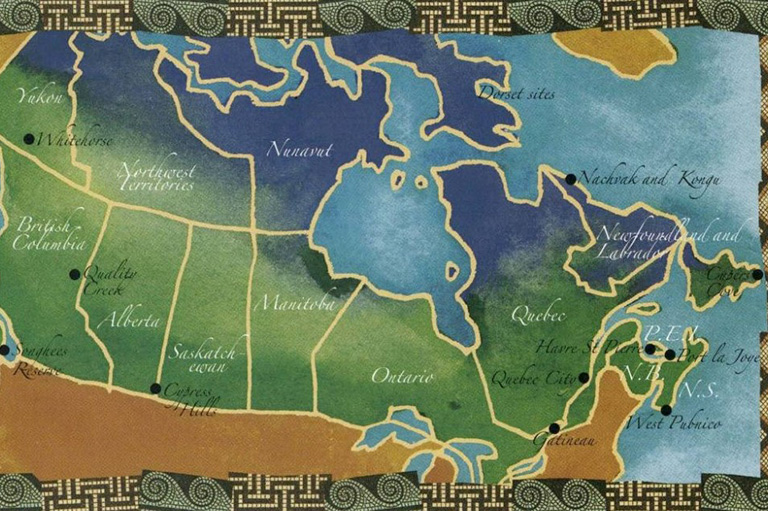Quebec City: Blending past and present

On the banks of the St. Lawrence, in the Old Port of the city of Quebec, the second-oldest European city in Canada after St. Johns, Nfld., sits the hotel Auberge Saint-Antoine.
The modern hotel with its luxurious rooms, highspeed Internet and spa is an unlikely place to encounter archaeological artifacts.
But patrons leisurely sipping a glass of aged Merlot in the hotel lounge can casually contemplate cannonballs fired in 1759, muse over a collection of shoe soles from the 17th century or ponder an array of historic glass bottles.
Or they can admire a 150-year-old lantern encased in their night table before slipping under their down duvets and drifting off to sleep.
Tony Price, a fifth-generation Quebecois, acquired the collection of crumbling warehouses and apartment buildings in 1990, transforming them into a luxury hotel.
The owners entered into a unique 25-year collaboration with Laval University, the City of Quebec and the Ministry of Culture to incorporate and display the museum-quality artifacts found on the site.
Aware that he was developing an archaeological site, Price was enthusiastic and supportive, working with the City of Quebec, from which he acquired the site, to adhere to architectural restrictions and promote the site’s heritage.
In 1991, before building began on the open-air parking area, a team from Laval University, headed by archaeologist Reginald Auger, started an archaeological investigation. Though not the first excavation on the site, it revealed a wealth of historical treasures.
Used as a cannon battery in wartime and a thriving centre of merchant trade in peace time, the site, known as Ilot Hunt, yielded a stunning array of artifacts, providing a continuous record of military, commercial and residential occupation since the 17th century.
From excavating the ancient latrines and other areas, Auger says, archaeologists have gained insight into the health of the site’s occupants through examination of parasites, learned more about British, French and Irish diets, and acquired information on the sewage system developed in the 19th century.
Intrigued by the excavation in the parking lot, the Price family became avid observers, delighting at the artifacts uncovered daily.
They developed the unique idea of incorporating the artifacts and the site’s heritage into the hotel’s design, enlisting museum-trained professionals to preserve and maintain authenticity, and collaborating with archaeologists involved in the excavation.
William Moss, archaeologist with the City of Quebec who worked with the Price family on the development of the 25-year agreement, calls it one of the most interesting experiences he has had as an archaeologist.
Of the thousands of artifacts uncovered, hundreds are now elegantly displayed in glass cases built into walls and room features. Each artifact is accompanied by a drawing of the original piece and a description of its use.
A section of the 17th-century cannon battery, at one point levelled and used as a wharf but now carefully restored, is part of the hotel lobby. Food in the dining room, which is housed in an early 19th-century warehouse used by a tableware merchant, is served on replicas of an early 19th-century plate excavated from the site.
On Saturdays guests are given archaeological tours explaining the history of the site and the significance of the artifacts.
Now run by Price’s son Evan, the Auberge Saint-Antoine offers a window into the Quebec of centuries past, lending new meaning to time travel.
For further information visit Saint-Antoine.com.
We hope you’ll help us continue to share fascinating stories about Canada’s past by making a donation to Canada’s History Society today.
We highlight our nation’s diverse past by telling stories that illuminate the people, places, and events that unite us as Canadians, and by making those stories accessible to everyone through our free online content.
We are a registered charity that depends on contributions from readers like you to share inspiring and informative stories with students and citizens of all ages — award-winning stories written by Canada’s top historians, authors, journalists, and history enthusiasts.
Any amount helps, or better yet, start a monthly donation today. Your support makes all the difference. Thank you!
Themes associated with this article
Advertisement















